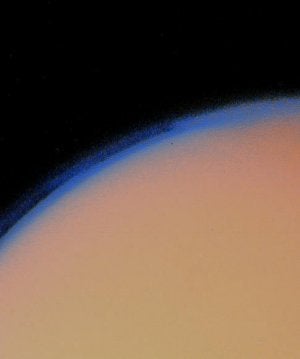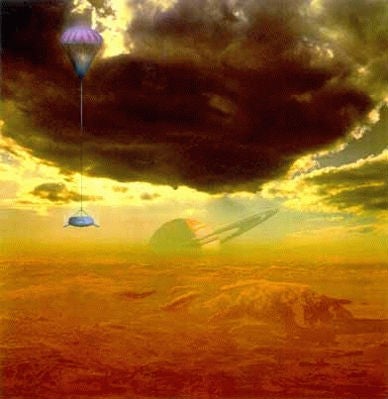Though primarily comprised of nitrogen, Titan’s atmosphere holds a good amount of methane, as opposed to the carbon dioxide of Earth’s atmosphere. Scientists theorize that atmospheric conditions on the moon are similar to those of primeval Earth. Since methane converts to hydrogen cyanide when combined with nitrogen, the building blocks of life are present, even if prohibited from taking the next step — becoming life — due to the extremely cold temperatures on the moon.
A great deal of intellectual light will be cast into this hazy fog come December 2004 when the Huygens probe will be released by the Cassini spacecraft in a 22-day arc towards Titan. The European Space Agency (ESA) launched Cassini and Huygens from Earth in 1997, and the mission is taking a tour of the heavens, with Saturn as its final destination.
Information from Huygens will be relayed to Earth via the Cassini orbiter. This less adventurous spacecraft will orbit Saturn, studying the planet and its moons, for at least four years. The Cassini-Huygens mission is a joint project of NASA’s Jet Propulsion Laboratory, the European Space Agency, and the Italian Space Agency.











